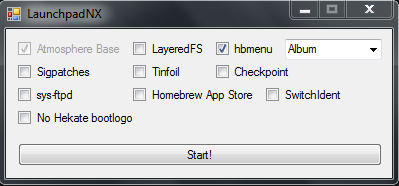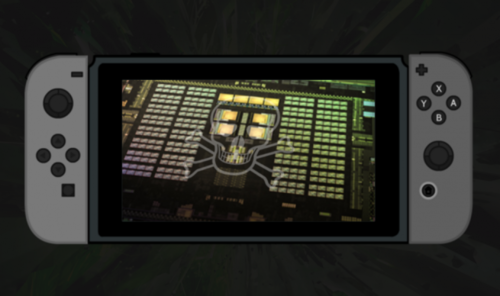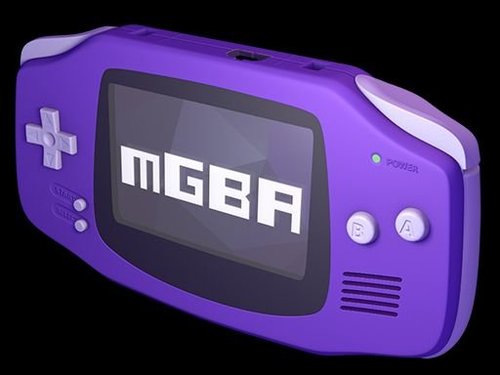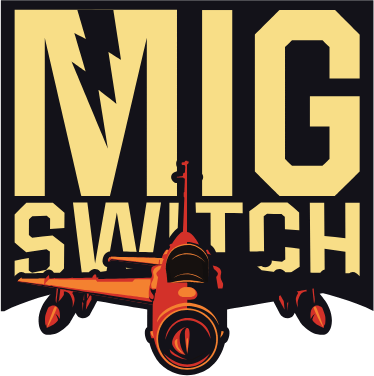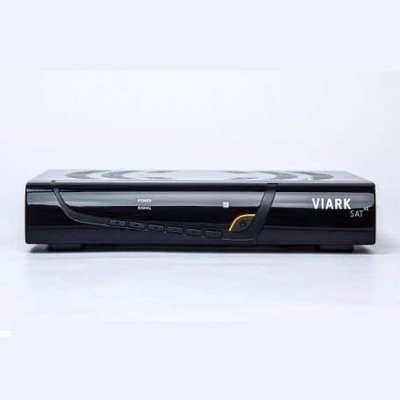Switch
414 archivos
-
Lakka for Switch
Lakka convierte tu Nintendo Switch en toda una consola retro usando el poder de RetroArch.
Lakka es una distribución de Linux destinada a convertir pequeños dispositivos informáticos en consolas retrogaming. Es un sistema operativo mínimo que utiliza RetroArch como interfaz; contiene nada más y nada menos que lo que se requiere para RetroArch y sus más de 100 consolas y juegos independientes compatibles.
Esta versión para Switch funciona gracias a ShofEL2 ! Prepara tu tarjeta SD, arranca el sistema y ya estás listo para jugar!
-
Lan Play Curses
A simple curses GUI for switch-lan-play. Written for GNU/Linux but should also work on Windows (I haven't tested it so don't take my word for it)
Usage
Place your lan-play client, lan-play-curses.py and servers.json in the same directory (or edit the path yourself) and launch the script. Run it as root/admin
$ sudo python3 lan-play-curses.py In servers.json, the name and pmtu fields are optional. Set a pmtu of 500 to play Animal Crossing. Add/remove servers to your liking by following the template.
by HamletDuFromage.
-
LAN Play GUI
This is a Visual Interface based on electron for lan play, it also doubles as a server list manager, you can add servers, edit server, remove them, change the order and launch lan-play with any of the servers you have on your list.
It also tells you if the server is online, and if it is online, also can tell you the users playing on it on that moment, and the version of lan-play the server is using.
Instructions
Windows
1.- Download the executable of lan-play adequate for your system (64/32 bits) 2.- Download the RAR with lan play GUI adequate for your system (64/32 bits) 3.- Uncompress the RAR wherever you want 4.- Put the executable of lan-play without renaming it in the same folder as lan play GUI 5.- if you have done this well you should have lan-play-GUI.exe and the executable of lan play on the same folder 6.- Execute lan-play-GUI.exe as administrator 7.- ??? 8.- Profit PS.- When you Connect to a server a cmd windows would pop up, you just select your interface and it would work, when you want to change server close that command line window and click Connect to Server on a new server
Linux
1.- Download lan-play-linux 2.- Download lan-play-GUI-linux 3.- Put lan-play-linux in home 4.- sudo setcap 'CAP_NET_RAW+eip CAP_NET_ADMIN+eip' lan-play-linux 5.- chmod 777 lan-play-linux 6.- Execute lan-play-gui-linux 7.- ??? 8.- Profit PS.- When you Connect to a server a terminal would pop up, you just select your interface and it would work, when you want to change server close that terminal and click Connect to Server on a new server
Credits
Main dev: takashi1kun (Red1Reaper on GBAtemp, and Aitor in Discord, and lyoko1 on reddit). Thanks to Svahnen for helping with the linux porting, linux testing, and helping me whit the project in general. Thanks to Space as Space provided me whit the function to ping Thanks to the devs of lan-play for making it in general, as this is just a Visual Interface for launching it -
LaunchpadNX
Changelog
You can now hold R to enter hbmenu on your desired title! You can now remove Hekate's bootlogo feature Checkpoint now resides in its own folder Installation Instructions
Grab the latest version of devkitPro and make sure Switch Development is selected. Install Git if you do not have it already Launch the program and follow the instructions! Thanks to...
SciresM CTCaer Team ReSwitched Switchbrew yellows8 tomGER Bernardo Giordano wrathsoffire76 rajkosto Adubbz jakibaki vgmoose joel16 -
ldn_mitm
A mitm kip modified from fs_mitm.
-
libcross2d
A c++ cross platform 2d graphic, input, audio and config library
Features:
run on Windows, Linux, Nintendo Switch, Nintendo 3DS and Sony PS Vita draw textures, rectangles, circles, texts (TrueType) and more basic tween engine (move, rotate, scale, color) clock/timer classes configuration file handling pack your application (zip) for release on any target, including resources (data/common) quickly prototype your application on desktop (Linux and Windows) use hardware acceleration on Linux, Windows, Switch, 3DS and PS Vita use some of the great sfml library stuff (fonts, shapes, matrices) use tweeny for the (minimal) tween engine use some of the great libretro shaders (Linux, Switch) use some citro2d code for the 3ds renderer use some vita2d code for the vita renderer use libconfig for the configuration classes preliminary developed for my own use, still a work in progress by Cpasjuste.
-
LibHac
LibHac es un un Framework .NET Framework y una librería Core .NET .NET para leer y editar formatos de archivo utilizados por Nintendo Switch. Está integrada con hactoolnet.
La librería puede ser usada desde el archivo .nupkg o bien desde NuGet.
Formatos soportados
NCA XCI NAX0 PFS0/HFS0/NSP RomFS Save file Package1 Package2 INI1/KIP1 CNMT NACP Ticket PRODINFO Switch NAND and SD card Funcionalidades adicionales
Edición y firma de archivos de guardado Creación de archivo PFS0 Derivación de la clave de Switch Verificación integrada de archivos NCA, XCI, etc. Lectura personalizada de las claves de los juegos. Lectura, análisis y muestra de información osbre la NAND de Switch y la SD Card Extracción de archivos NCA, RomFS y otros formatos directamente desde una tarjeta SD o NAND, incluídos los juegos parcheados Lectura de la NAND directamente desde la Sweitch utilizando memloader. Y más! Aplicación creada por Thealexbarney.
-
libnx
Nintendo Switch AArch64-only userland library.
Based on libctru.
by switchbrew.
-
libnx-rs
Raw bindings to libnx to be used from Rust for the purpose of making Switch homebrew in Rust.
Note that the API is currently unstable; at the moment all function and struct bindings are generated at final compile time in libnx_rs::libnx via bindgen, but this may change.
For information on how to actually use this library, see libnx-rs-template.
Credits and Thanks
Igor1201's rusted-switch which provided the foundation for this template.
Roblabla and his mighty Megaton Hammer for allowing me to take over his Discord server.
-
libtesla
libtesla is the interface between the Tesla overlay loader and user-made Overlays. It handles all layer creation, UI creation, drawing and input management. It's main goal is to make sure all overlays look and feel similar and don't differenciate themselves from the switch's native overlays.
Please Note: While it is possible to create overlays without libtesla, it's highly recommended to not do so. libtesla handles showing and hiding of overlays, button combo detection, layer creation and a lot more. Not using it will lead to an inconsistent user experience when using multiple different overlays ultimately making it worse for the end user. If something's missing, please consider opening a PR here.
by WerWolv.
-
libusbhsfs
Biblioteca estática USB Mass Storage Class Host + Filesystem Mounter para homebrew de Nintendo Switch.
Principales características
Supports USB Mass Storage (UMS) devices that implement at least one USB interface descriptor with the following properties: bInterfaceClass: 0x08 (USB Mass Storage Class). bInterfaceSubClass: 0x06 (SCSI Transparent Command Set SubClass). bInterfaceProtocol: 0x50 (Bulk-Only Transport [BOT] Protocol). Bulk-Only Transport (BOT) driver written from scratch, which implements the most common SCSI Primary Command Set (SPC) commands as well as BOT class-specific requests. Supported SPC commands: TEST UNIT READY (0x00). REQUEST SENSE (0x03). INQUIRY (0x12). MODE SENSE (6) (0x1A). START STOP UNIT (0x1B). PREVENT ALLOW MEDIUM REMOVAL (0x1E). READ CAPACITY (10) (0x25). READ (10) (0x28). WRITE (10) (0x2A). MODE SENSE (10) (0x5A). READ (16) (0x88). WRITE (16) (0x8A). SERVICE ACTION IN (0x9E). Supported SERVICE ACTION IN actions: READ CAPACITY (16) (0x10). Supported BOT class-specific requests: Get Max LUN (0xFE). Bulk-Only Mass Storage Reset (0xFF). Supports UMS devices with long logical block addresses (64-bit LBAs) and variable logical block sizes (512 - 4096 bytes). Background thread that takes care of starting all available logical units from each newly connected UMS device, as well as mounting the available filesystems from each one whenever possible. Supported partitioning schemes: Super Floppy Drive (SFD) (Volume Boot Record @ LBA 0). Master Boot Record (MBR). Extended Boot Record (EBR). GUID Partition Table (GPT) + protective MBR. Supported filesystems: FAT12 (via FatFs). FAT16 (via FatFs). FAT32 (via FatFs). exFAT (via FatFs). NTFS (via NTFS-3G). Completely possible to add support for additional filesystems, as long as their libraries are ported over to Switch. Uses devoptab virtual device interface to provide a way to use standard I/O calls from libc (e.g. fopen(), opendir(), etc.) on mounted filesystems from the available logical units. Easy to use library interface: Provides an autoclear user event that is signaled each time a status change is detected by the background thread (new device mounted, device removed). Painless listing of mounted partitions using a simple struct that provides the devoptab device name, as well as other interesting information (filesystem index, filesystem type, write protection, raw logical unit capacity, etc.). Provides a way to safely unmount UMS devices at runtime. Supports the usbfs service from SX OS. Limitations
Bulk-Only Transport (BOT) driver: Up to 32 different USB Mass Storage Class interfaces can be used at the same time. Increasing this limit isn't harmful, but makes the library take up additional heap memory. Only a single SCSI operation can be performed at any given time per UMS device, regardless of their number of logical units. This is an official limitation of the BOT protocol. Mutexes are used to avoid multiple SCSI operations from taking place at the same time on the same UMS device. Filesystem libraries: FatFs: Up to 64 FAT volumes can be mounted at the same time across all available UMS devices. Original limit was 10, but FatFs was slightly modified to allow for more volumes to be mounted simultaneously. NTFS-3G: Crypto operations aren't supported. Security contexts are always ignored. Only partial journaling is supported, so unexpected crashes or power loss can leave the a mounted NTFS volume in an inconsistent state. In cases where there has been heavy activity prior to the crash or power loss, it is recommended to plug the UMS device into a Windows PC and let it replay the journal properly before remounting with NTFS-3G, in order to prevent possible data loss and/or corruption. Symbolic links are transparent. This means that when a symbolic link in encountered, its hard link will be used instead. Stack and/or heap memory consumption: This library is not suitable for custom sysmodules and/or service MITM projects. It allocates a 8 MiB buffer per each UMS device, which is used for command and data transfers. It also relies heavily on libnx features, which are not always compatible with sysmodule/MITM program contexts. Switch-specific FS features: Concatenation files aren't supported. usbfs service from SX OS: Only a single FAT volume from a single drive can be mounted. Relative paths aren't supported. chdir(), rename(), dirreset() and utimes() aren't supported. There are probably other limitations we don't even know about, due to the closed-source nature of this CFW. Créditos
DarkMatterCore: UMS device LUN/FS management, Bulk-Only Transport (BOT) driver, library interface. XorTroll: FS mounting system, devoptab device (un)registration, example test application. Rhys Koedijk: NTFS support. Lots of SPC/BOT docs across the Internet - these have been referenced in multiple files from the codebase. Agradecimientos
ChaN, for the FatFs module. Tuxera and NTFS-3G contributors, for the NTFS-3G library. Switchbrew and libnx contributors. Code from libnx was used for devoptab device management and path handling. blawar, for providing the updated usbfs SX OS service calls. Whovian9369. I literally would have dropped Switch homebrew development altogether some months ago, if not for you. Thanks, mate. ITotalJustice, for testing the partition table parsing algorithm. FennecTECH, for breaking stuff on a regular basis. All the Alpha Testers and Super Users from the nxdumptool Discord server, for being a constant source of ideas (and memes). And last but not least, my girlfriend, for always being by my side and motivating me to keep working on all my projects. I love you. Creado por DarkMatterCore.
-
Linkalho
Linkalho es una aplicación casera que vinculará cuentas NNID offline. Vincula (o desvincula) cuentas existentes para que no pierda sus partidas guardadas. Esta aplicación no crea una cuenta nueva. Si crea una nueva cuenta y desea vincularla, simplemente vuelva a ejecutar la aplicación.
Por qué necesito Linkalho?
Si nunca tuvo problemas con juegos / aplicaciones que no se iniciaron hasta que vincule su cuenta de usuario de Switch y nunca experimentó problemas con ciertos títulos atascados en la Actualización de datos del juego o ciertos emuladores oficiales que le presentan nada más que una pantalla negra en lugar de la selección del juego , entonces no necesitas usar este homebrew.
Installation:
Place the .nro file in the /switch/linkalho folder of your SDcard. Go to the homebrew app and run Linkalho Reboot to payload
After completing the selected operation, Linkalho will try to find the best way to reboot to an existing payload:
if the user places a payload file in the application's root (/switch/linkalho/payload.bin) if Atmosphere is detected and /atmosphere/reboot_payload.bin exists if ReiNX is detected and /ReiNX.bin exists if SXOS is detected it will issue a soft-reboot Usage:
Link all accounts
Will link all accounts on the console. If any of the existing accounts is already linked, it will be re-linked. This operation creates a backup in /switch/linkalho/backups
Unlink all accounts
Will remove all NNID linking from any accounts on the console regardless of the NNIDs being officially linked or not. This operation creates a backup in /switch/linkalho/backups
Restore backup
Restores any previous state from a backup file. The file must be places in /switch/linkalho/restore/restore.zip This operation creates a backup in /switch/linkalho/backups
Create manual backup
Will create a backup in /switch/linkalho/backups. All linking and unlinking operations will produce a backup before making changes. You should only use this option if you want to manually create a backup!
Credits
devkitPro for the toolchain! natinusala (lib borealis) for the amazing library that mimicks the Switch's original UI and UX sebastiandev (zipper wrapper for minizip) for their nice wrapper to the minizip Kronos2308 for the help in the initial phases of research. SciresM for his "reboot to payload" code and HamletDuFromage for the code contributions stick2target for the icon, the beta testing and for supplying crucial files that helped in the creation of the generators. boredomisacrime for the beta testing. by rdmrocha.
-
Lithium
Lithium es una aplicación hombebrew para Nintendo Switch con el único proposito de instalar juegos en la consola.
Si estabas buscando Goldleaf, Lithium es una evolución extendida y más segura, según sus creadores.
Instalación
Descomprime los archivos en el directorio raiz de la tarjeta SD y luego ejecuta el archivo lithium.nro a través del homebrew launcher. Uso
Simplemente busca entre tus archivos .NSP y .NSZ y haz click en A sobre el que quieras para instalarlo.
Si recibes un error sobre la verificación de la firma, el archivo se ha modificado y podría ser potencialmente peligroso, por lo que para proteger su conmutador, la instalación se ha bloqueado. Si desea anular esto e instalarlo de todos modos, habilite "instalar código sin firmar" en las opciones de instalación. La contraseña es U U D D L R L R B A +.
Agregar ubicaciones de red
Vaya al "Explorador de archivos", presione X para crear uno nuevo, seleccione el protocolo "FTP", "HTTP" o "NUT", complete la información requerida, luego presione X para guardar. Luego, puede buscar archivos e instalarlos desde la red.
Otros
Lithium es una versión simplificada de Tinfoil. Si eres un usuario avanzado, seguramente disfrutes y le saques partido de sus funcionalidades avanzadas.
-
Lockpick
This is a ground-up C++17 rewrite of homebrew key derivation software, namely kezplez-nx. It also dumps titlekeys. This will dump all keys through *_key_05 on firmwares below 6.2.0 and through *_key_06 on 6.2.0 and above.
What this software does differently
Dumps titlekeys Dumps 6.2.0 keys Uses the superfast xxHash instead of sha256 when searching exefs for keys for a ~5x speed improvement Gets all possible keys from running process memory - this means no need to decrypt Package2 at all, let alone decompress KIPs Gets header_key without tsec, sbk, master_key_00 or aes sources - which may or may not be the same way ChoiDujourNX does it ? (and I'm gonna issue a challenge to homebrew title installers to implement similar code so you don't need your users to use separate software like this ? it's up to you to figure out if the same can be done for key_area_keys if needed) Usage
Use Hekate v4.5+ to dump TSEC and fuses: Push hekate payload bin using TegraRCMSmash/TegraRCMGUI/modchip/injector Using the VOL and Power buttons to navigate, select Console info... Select Print fuse info Press Power to save fuse info to SD card Select Print TSEC keys Press Power to save TSEC keys to SD card Launch CFW of choice Open Homebrew Menu Run Lockpick Use the resulting prod.keys file as needed and rename if required You may instead use biskeydump and dump to SD to get all keys prior to the 6.2.0 generation - all keys up to those ending in 05. This will dump all keys up to that point regardless which firmware it's run on.
Notes
To get keys ending in 06, you must have firmware 6.2.0 installed
No one knows package1_key_06, it's derived and erased fully within the encrypted TSEC payload. While there's a way to extricate tsec_root_key due to the way it's used, this is unfortunately not true of the package1 key
If for some reason you dump TSEC keys on 6.2.0 and not fuses (secure_boot_key) you will still get everything except any of the package1 or keyblob keys (without secure_boot_key, you can't decrypt keyblobs and that's where package1 keys live)
-
Lockpick_RCM
Lockpick_RCM es un payload básico para Nintendo Switch que deriva claves de cifrado para su uso en el software de manejo de archivos Switch como hactool, hactoolnet/LibHac, ChoiDujour, etc sin arrancar Horizon OS (el sistema operativo original de la consola)
Debido a los cambios impuestos por el firmware 7.0.0, Lockpick homebrew ya no puede derivar las últimas claves. Sin embargo, en el entorno de tiempo de arranque, hay menos limitaciones.
Como usar Lockpick_RCM
Es muy recomendable, pero no obligatorio, colocar Minerva en SD de la última versión de Hekate para obtener el mejor rendimiento, especialmente al descargar las claves de título: el archivo y la ruta son /bootloader/sys/libsys_minerva.bso Ejecuta Lockpick_RCM.bin usando tu inyector payload favorito Al finalizar, las claves se guardarán en la ruta /switch/prod.keys de la tarjeta SD Si la consola tiene el firmware 7.x, the /sept/ folder de Atmosphère o Kosmos que contiene tanto sept-primary.bin como sept-secundaria.enc debe estar presente en la SD o, de lo contrario, solo es posible la derivación de la clave maestra del bloque de claves (es decir, solo hasta master_key_05) Aplicación creada por shchmue.
-
Luigi's Mansion 3 Cheat file
Add:
Money MAX Bones unlimited (Credits) by merlin555.
-
Mame-NX
MAME 0.72 for the Nintendo Switch
install devkitproA64, install libzip, libpng, libjpeg, switch-freetype, switch-mesa, switch-glad, switch-glm
Test with an emulator (RyuJinx) or real hardware
by Lantus.
-
MarioBrosNX
MarioBrosNX C++/SDL2, Created by Łukasz Jakowski 2014, Ported to the Nintendo Switch By Krank/KuranKu 2019.
Disclaimer:
All ingame images and sound belong to its authors and none other, the right for mario bros title belongs to nintendo. this game created for fun and love of the community
HAVE FUN MARIO!!!
-
McOsu NX
An unofficial open-source client for osu! beatmaps, with the main focus on making practicing easier and customizing gameplay.
How to install:
Download the newest zip file Merge the contents of the zip file with your microSD card (do NOT change any folder/file structures/names!) Launch HBL via takeover or HBL via the NSP version (to get full RAM access, which this game requires), and start McOsu How to use:
NOTE: You don't have to create any folder structures, everything is already prepared. Follow the guide on extracting beatmaps/skins below, and simply put them into /switch/McOsu/Songs/ or /switch/McOsu/Skins/ on your microSD card. Default beatmaps are already included, so just follow their structure. How to add beatmaps/skins: https://steamcommunity.com/sharedfiles/filedetails/?id=880768265 FAQ: https://steamcommunity.com/app/607260/discussions/0/1620599015885400990/ The game will give you a big fat warning on the main menu if it doesn't have access to enough memory (< 1 GB). At least on my system, if you still launch HBL via the Album applet, then only ~400 MB out of 4 GB are available, and some of that is already used up. (This might not even be a problem anymore with newer Atmosphere/ReiNX/etc. versions.) I have only tested this on firmware 5.1, with a pretty old SD setup and RajNX (which is no longer maintained), but never change a running system you know. If you get audio crackling after minimizing the game or going into sleep mode: To fix it, Go to Options > Audio > "Restart SoundEngine (fix crackling)" If you are playing beatmaps with a lot of sliders visible at the same time, and consistently getting less than 60 fps, improve performance by enabling Options > Skin > "Use slidergradient.png" If you get stuck at 0% loading forever, then the resource loader thread could not be created. Try restarting the game, HBL, and your system, in that order. This has only happened to me once, so it shouldn't be a problem. All speed changing mods are unavailable (DT/HT/DC/NC, Speed/BPM Multiplier, Timewarp) because the audio library does not support varying playback speed (yet). by McKay42.
-
melonDS for Switch
melonDS for Switch es una versión especial de este emulador de Nintendo DS para Nintendo Switch.
Cómo utilizar melonDS en Switch
melonDS requiere de copias de la BIOS/firmware de Nintendo DS. Archivos requeridos:
bios7.bin, 16KB: ARM7 BIOS bios9.bin, 4KB: ARM9 BIOS firmware.bin, 128/256/512KB: firmware El arranque de firmware requiere un volcado de firmware de una DS o DS Lite original. Los firmwares de DS descargados de una DSi o 3DS no se pueden iniciar y solo contienen datos de configuración, por lo que solo son adecuados cuando se inician juegos directamente.
Posibles tamaños de los firmwares
128KB: DSi/3DS DS-mode firmware (reduced size due to lacking bootcode) 256KB: regular DS firmware 512KB: iQue DS firmware Los dumps de la DS BIOS desde una Nintend o3DS pueden ser utilizados sin problemas de compatibilidad. Dumps de la bios de DSi también pueden ser utilizados.
Créditos
Martin para GBAtek, una buena documentación Cydrak para la investigación adicional de GPU 3D limittox para el icono Todos ustedes, camaradas que han estado probando melonDS, reportando problemas, sugiriendo mierda, etc. Aplicación creada por RSDuck.
-
Memloader
Parses ini files from microsd root and loads/decompresses/boots the appropriate binaries on the AArch64 CPU of the Nintendo Switch.
Ini files can be generated from source images using the programs inside tools subdirectory. Currently the tools understand coreboot CBFS images or ELF payloads (like u-boot).
Usage
Either put the appropriate ini+binary files onto your microsd card before inserting it into your Switch, or pass the --dataini parameter to TegraRcmSmash.exe to load them via USB. Send the memloader.bin to your Switch running in RCM mode via a fusee-launcher (sudo ./fusee-launcher.py memloader.bin or just drag and drop it onto TegraRcmSmash.exe on Windows) Follow the on-screen menu. **I am not responsible for anything, including dead switches, loss of life, or total nuclear annihilation.**
by Rajkosto.
-
mGBA for Switch
mGBA is an emulator for running Game Boy Advance games. It aims to be faster and more accurate than many existing Game Boy Advance emulators, as well as adding features that other emulators lack. It also supports Game Boy and Game Boy Color games.
Features
--------
- Highly accurate Game Boy Advance hardware support[<sup>[1]</sup>](#missing).
- Game Boy/Game Boy Color hardware support.
- Fast emulation. Known to run at full speed even on low end hardware, such as netbooks.
- Qt and SDL ports for a heavy-weight and a light-weight frontend.
- Local (same computer) link cable support.
- Save type detection, even for flash memory size[<sup>[2]</sup>](#flashdetect).
- Support for cartridges with motion sensors and rumble (only usable with game controllers).
- Real-time clock support, even without configuration.
- Solar sensor support for Boktai games.
- Game Boy Camera and Game Boy Printer support.
- A built-in BIOS implementation, and ability to load external BIOS files.
- Turbo/fast-forward support by holding Tab.
- Rewind by holding Backquote.
- Frameskip, configurable up to 10.
- Screenshot support.
- Cheat code support.
- 9 savestate slots. Savestates are also viewable as screenshots.
- Video and GIF recording.
- Remappable controls for both keyboards and gamepads.
- Loading from ZIP and 7z files.
- IPS, UPS and BPS patch support.
- Game debugging via a command-line interface and GDB remote support, compatible with IDA Pro.
- Configurable emulation rewinding.
- Support for loading and exporting GameShark and Action Replay snapshots.
- Cores available for RetroArch/Libretro and OpenEmu.
- Many, many smaller things.
#### Game Boy mappers
The following mappers are fully supported:
- MBC1
- MBC1M
- MBC2
- MBC3
- MBC3+RTC
- MBC5
- MBC5+Rumble
- MBC7
The following mappers are partially supported:
- MBC6
- MMM01
- Pocket Cam
- TAMA5
- HuC-1
- HuC-3
### Planned features
- Networked multiplayer link cable support.
- Dolphin/JOY bus link cable support.
- M4A audio mixing, for higher quality sound than hardware.
- Re-recording support for tool-assist runs.
- Lua support for scripting.
- A comprehensive debug suite.
- e-Reader support.
- Wireless adapter support.
Supported Platforms
-------------------
- Windows Vista or newer
- OS X 10.7 (Lion)[<sup>[3]</sup>](#osxver) or newer
- Linux
- FreeBSD
- Nintendo 3DS
- Wii
- PlayStation Vita
Other Unix-like platforms, such as OpenBSD, are known to work as well, but are untested and not fully supported.
### System requirements
Requirements are minimal. Any computer that can run Windows Vista or newer should be able to handle emulation. Support for OpenGL 1.1 or newer is also required.
Downloads
---------
Downloads can be found on the official website, in the [Downloads][downloads] section. The source code can be found on [GitHub][source].
Controls
--------
Controls are configurable in the settings menu. Many game controllers should be automatically mapped by default. The default keyboard controls are as follows:
- **A**: X
- **B**: Z
- **L**: A
- **R**: S
- **Start**: Enter
- **Select**: Backspace
Compiling
---------
Compiling requires using CMake 2.8.11 or newer. GCC and Clang are both known to work to compile mGBA, but Visual Studio 2013 and older are known not to work. Support for Visual Studio 2015 and newer is coming soon. To use CMake to build on a Unix-based system, the recommended commands are as follows:
mkdir build
cd build
cmake -DCMAKE_INSTALL_PREFIX:PATH=/usr ..
make
sudo make install
This will build and install mGBA into `/usr/bin` and `/usr/lib`. Dependencies that are installed will be automatically detected, and features that are disabled if the dependencies are not found will be shown after running the `cmake` command after warnings about being unable to find them.
If you are on macOS, the steps are a little different. Assuming you are using the homebrew package manager, the recommended commands to obtain the dependencies and build are:
brew install cmake ffmpeg imagemagick libzip qt5 sdl2 libedit pkg-config
mkdir build
cd build
cmake -DCMAKE_PREFIX_PATH=`brew --prefix qt5` ..
make
Note that you should not do a `make install` on macOS, as it will not work properly.
#### Windows developer building
To build on Windows for development, using MSYS2 is recommended. Follow the installation steps found on their [website](https://msys2.github.io). Make sure you're running the 32-bit version ("MSYS2 MinGW 32-bit") (or the 64-bit version "MSYS2 MinGW 64-bit" if you want to build for x86_64) and run this additional command (including the braces) to install the needed dependencies (please note that this involves downloading over 1100MiB of packages, so it will take a long time):
For x86 (32 bit) builds:
pacman -Sy base-devel git mingw-w64-i686-{cmake,ffmpeg,gcc,gdb,imagemagick,libelf,libepoxy,libzip,pkg-config,qt5,SDL2,ntldd-git}
For x86_64 (64 bit) builds:
pacman -Sy base-devel git mingw-w64-x86_64-{cmake,ffmpeg,gcc,gdb,imagemagick,libelf,libepoxy,libzip,pkg-config,qt5,SDL2,ntldd-git}
Check out the source code by running this command:
git clone https://github.com/mgba-emu/mgba.git
Then finally build it by running these commands:
cd mgba
mkdir build
cd build
cmake .. -G "MSYS Makefiles"
make
Please note that this build of mGBA for Windows is not suitable for distribution, due to the scattering of DLLs it needs to run, but is perfect for development. However, if distributing such a build is desired (e.g. for testing on machines that don't have the MSYS2 environment installed), running `cpack -G ZIP` will prepare a zip file with all of the necessary DLLs.
### Dependencies
mGBA has no hard dependencies, however, the following optional dependencies are required for specific features. The features will be disabled if the dependencies can't be found.
- Qt 5: for the GUI frontend. Qt Multimedia or SDL are required for audio.
- SDL: for a more basic frontend and gamepad support in the Qt frontend. SDL 2 is recommended, but 1.2 is supported.
- zlib and libpng: for screenshot support and savestate-in-PNG support.
- libedit: for command-line debugger support.
- ffmpeg or libav: for video recording.
- libzip or zlib: for loading ROMs stored in zip files.
- ImageMagick: for GIF recording.
- SQLite3: for game databases.
- libelf: for ELF loading.
SQLite3, libpng, and zlib are included with the emulator, so they do not need to be externally compiled first.
Footnotes
---------
<a name="missing">[1]</a> Currently missing features are
- OBJ window for modes 3, 4 and 5 ([Bug #5](http://mgba.io/b/5))
- Mosaic for transformed OBJs ([Bug #9](http://mgba.io/b/9))
<a name="flashdetect">[2]</a> Flash memory size detection does not work in some cases. These can be configured at runtime, but filing a bug is recommended if such a case is encountered.
<a name="osxver">[3]</a> 10.7 is only needed for the Qt port. The SDL port is known to work on 10.5, and may work on older.
[downloads]: http://mgba.io/downloads.html
[source]: https://github.com/mgba-emu/mgba/
Copyright
---------
mGBA is Copyright © 2013 – 2018 Jeffrey Pfau. It is distributed under the [Mozilla Public License version 2.0](https://www.mozilla.org/MPL/2.0/). A copy of the license is available in the distributed LICENSE file.
mGBA contains the following third-party libraries:
- [inih](https://github.com/benhoyt/inih), which is copyright © 2009 Ben Hoyt and used under a BSD 3-clause license.
- [blip-buf](https://code.google.com/archive/p/blip-buf), which is copyright © 2003 – 2009 Shay Green and used under a Lesser GNU Public License.
- [LZMA SDK](http://www.7-zip.org/sdk.html), which is public domain.
- [MurmurHash3](https://github.com/aappleby/smhasher) implementation by Austin Appleby, which is public domain.
- [getopt for MSVC](https://github.com/skandhurkat/Getopt-for-Visual-Studio/), which is public domain.
- [SQLite3](https://www.sqlite.org), which is public domain.
-
MIG Switch Firmware
Última versión del firmware oficial, en formato .s2, para MIG Switch, el dispositivo que nos permite cargar copias de seguridad en todos los modelos de Nintendo Switch.
Instalación/actualización del firmware de la tarjeta:
Coloque el archivo update.s2 en la carpeta raíz de la tarjeta microSD del Mig Switch Inserte la tarjeta microSD nuevamente en el Mig Switch Encienda el Mig Switch insertándolo en la consola Switch o Mig Dumper La luz LED del interruptor Mig parpadeará en azul por un breve momento. Cuando finalice la actualización, la luz LED dejará de parpadear y permanecerá azul Expulse el interruptor Mig y volverá a funcionar normalmente. Instalación/actualización del firmware del MIG Dumper:
Conecte el Mig Dumper mediante USB Aparecerá el dispositivo de almacenamiento masivo, con una carpeta 'Sistema' Arrastre y suelte el archivo update.s2 (descargado) en la carpeta 'System' de Mig Dumper para sobrescribir el archivo update.s2 presente allí. Espere a que termine la copia Desenchufe el Mig Dumper para que la actualización surta efecto
INSTRUCCIONES DE USO
Configuración:
Preparar la tarjeta microSD Formatee la tarjeta microSD con el sistema de archivos exFAT Coloque los archivos del juego XCI en la raíz del sistema de archivos microSD Asegúrese de que los archivos del juego sigan el esquema de nombres con "XXX.xci", "XXX (Datos iniciales).bin", "XXX (Certificado).bin", "XXX (Conjunto de ID de tarjeta).bin", "XXX (UID de tarjeta). ).bin" (como se indica en la sección "Haga una copia de seguridad de sus juegos" Opcionalmente, puedes crear la carpeta XXX.xci y colocar allí los archivos relevantes del juego. Lanzar juegos:
Seleccione el juego para iniciar expulsando y reinsertando la tarjeta de juego Al iniciar el juego, aparecerá el mismo juego cada vez que se vuelva a insertar. Para desbloquear, expulsa la tarjeta de juego cuando la luz LED se vuelva verde Modo en línea:
El modo online sólo se recomienda con un volcado del juego completo al 100%. Si falta un certificado, un conjunto de ID de tarjeta o un UID de tarjeta válidos, no se recomienda el modo en línea, ya que puede provocar el baneo permanente de la consola. -
MigDumpTool
MigDumpTool es una aplicación para Nintendo Switch de los creadores de Mig Switch, basada en nxdumptool, que nos permite dumpear los juegos de Switch desde la propia consola.
Principales características:
Admite múltiples dispositivos de almacenamiento de salida (tarjeta micro SD, PC, almacenamiento USB). Ofrece un menú de configuración avanzada para controlar el proceso de volcado. Interfaz de usuario elegante y fácil de usar. De uso gratuito. Totalmente de código abierto (bajo licencia GPLv3).
Instrucciones de uso de MigDumpTool:
Inicie MigDumpTool usando el menú Homebrew. Utilice el D-Pad / Sticks para moverse, A para seleccionar un elemento y B para retroceder. Seleccione el elemento "ALMACENAMIENTO DE SALIDA" para cambiar el dispositivo de almacenamiento de salida: Tarjeta micro SD: los datos volcados se guardan en la carpeta "MigDumpTool" en la raíz de la tarjeta micro SD. PC: los datos volcados se guardan en una PC conectada a la consola Nintendo Switch mediante un cable USB-C a USB-A. La PC debe estar ejecutando el programa host nxdumptool. Almacenamiento USB: conecte su USB y espere hasta que aparezca en la lista, luego selecciónelo con A. Los datos volcados se guardan en la raíz. Recomendamos utilizar la tarjeta micro SD exFAT de la tarjeta flash con un lector de tarjetas USB para descargar los datos de la tarjeta de juego directamente en ella. (Opcional) Seleccione el elemento "OPCIONES AVANZADAS" para controlar qué archivos se generan mediante el proceso de volcado. Seleccione el elemento "FÁCIL VOLCADO CON UN CLIC" y espere hasta que finalice el proceso de volcado. Las carpetas creadas por MigDumpTool ya siguen el formato requerido por la tarjeta flash. Listo! -
MiiPort
MiiPort es una aplicación homebrew para Nintendo Switch con la que podemos imporar y exportar Miis.
Cómo instalar MiiPort
Descarga la última versión de la aplicación de forma completamente gratuita desde esta misma página, descomprime el archivo .zip y copia el archivo .nro en la ruta sd:/switch/MiiPort.nro de tu Nintendo Switch (dentro de la carpeta "switch" de la tarjeta SD, vaya).
Algunas características necesitan la configuración:
[mii] is_db_test_mode_enabled=u8!0x1 Que se puede añadir en el archivo system_settings.ini de Atmosphere, en la ruta /atmosphere/config/system_settings.ini.
Cómo usar MiiPort
Coloca los archivos de los Mii en la ruta sd:/MiiPort/Miis/ con la extensión de archivo correspondiente a su formato. Actualmente la aplicación tiene soporte para los siguientes formatos:
Imágenes JPG de los códigos Mii QR requiere la llave QR del Mii charinfo puede usar la extensión .bin NFIF puede usar la extensión .dat coredata storedata QR key
In order to import Miis from a qr code, you must supply the Mii QR key. This is needed to decrypt the Mii data stored in Mii QR codes. You can find this on the internet by searching for "Mii QR key".
This program looks for the key in hex in the file /MiiPort/qrkey.txt. It will accept it in a variety of formats such as: [0xAA, 0xAA, 0xAA, 0xAA, 0xAA, 0xAA, 0xAA, 0xAA, 0xAA, 0xAA, 0xAA, 0xAA, 0xAA, 0xAA, 0xAA, 0xAA] or AAAAAAAAAAAAAAAAAAAAAAAAAAAAAAAA




